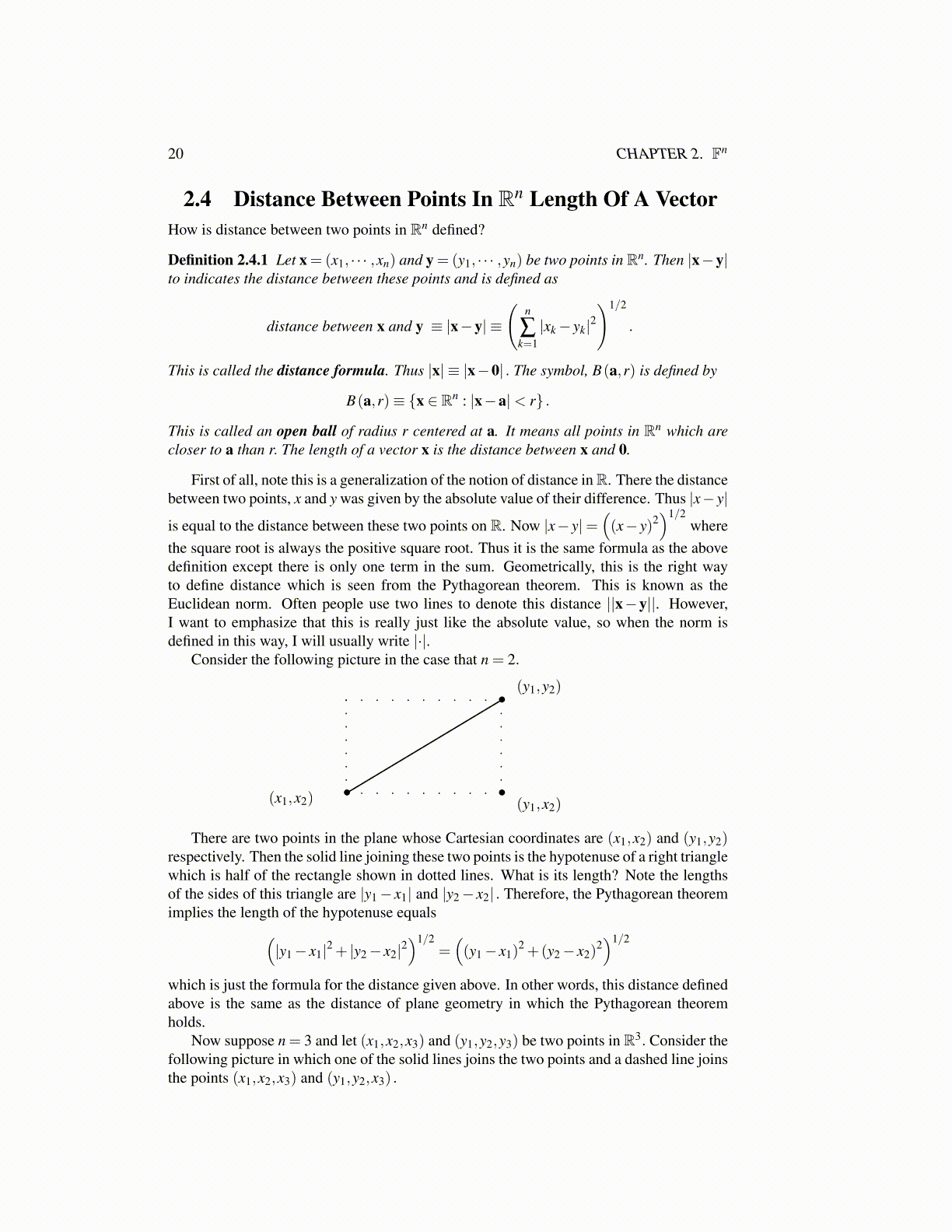
20 CHAPTER 2. Fn
2.4 Distance Between Points In Rn Length Of A VectorHow is distance between two points in Rn defined?
Definition 2.4.1 Let x = (x1, · · · ,xn) and y = (y1, · · · ,yn) be two points in Rn. Then |x−y|to indicates the distance between these points and is defined as
distance between x and y ≡ |x−y| ≡
(n
∑k=1|xk− yk|2
)1/2
.
This is called the distance formula. Thus |x| ≡ |x−0| . The symbol, B(a,r) is defined by
B(a,r)≡ {x ∈ Rn : |x−a|< r} .
This is called an open ball of radius r centered at a. It means all points in Rn which arecloser to a than r. The length of a vector x is the distance between x and 0.
First of all, note this is a generalization of the notion of distance in R. There the distancebetween two points, x and y was given by the absolute value of their difference. Thus |x− y|
is equal to the distance between these two points on R. Now |x− y|=((x− y)2
)1/2where
the square root is always the positive square root. Thus it is the same formula as the abovedefinition except there is only one term in the sum. Geometrically, this is the right wayto define distance which is seen from the Pythagorean theorem. This is known as theEuclidean norm. Often people use two lines to denote this distance ||x−y||. However,I want to emphasize that this is really just like the absolute value, so when the norm isdefined in this way, I will usually write |·|.
Consider the following picture in the case that n = 2.
• •
•
(x1,x2) (y1,x2)
(y1,y2)
There are two points in the plane whose Cartesian coordinates are (x1,x2) and (y1,y2)respectively. Then the solid line joining these two points is the hypotenuse of a right trianglewhich is half of the rectangle shown in dotted lines. What is its length? Note the lengthsof the sides of this triangle are |y1− x1| and |y2− x2| . Therefore, the Pythagorean theoremimplies the length of the hypotenuse equals(
|y1− x1|2 + |y2− x2|2)1/2
=((y1− x1)
2 +(y2− x2)2)1/2
which is just the formula for the distance given above. In other words, this distance definedabove is the same as the distance of plane geometry in which the Pythagorean theoremholds.
Now suppose n = 3 and let (x1,x2,x3) and (y1,y2,y3) be two points in R3. Consider thefollowing picture in which one of the solid lines joins the two points and a dashed line joinsthe points (x1,x2,x3) and (y1,y2,x3) .